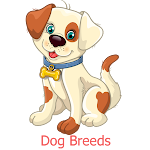 |
| How to Put Your Dog on a Diet |
Obesity is a common problem among dogs, and it can lead to a variety of health issues such as diabetes, arthritis, and heart disease. Putting your dog on a diet is essential for their overall well-being and longevity. In this article, we will discuss how to put your dog on a diet in a safe and effective manner.
Evaluating Your Dog's Weight
Before starting a diet plan for your dog, it's important to evaluate their current weight. You can do this by feeling their ribcage – you should be able to feel the ribs without excess fat covering them. Additionally, you can check for a visible waist when viewing your dog from above. If your dog is overweight, it's time to make some changes to their diet and exercise routine.
Dog's diet:
YOU MAY LIKE Dog Weight-Loss:
How to Help a Dog Lose WeightDog Weight Loss Program
Creating a Weight Reduction Plan for Dogs
Best Dog Weight Loss Program
How to Put Your Dog on a Diet
Weight-Loss Camp For Dogs
OVERWEIGHT AND DOG WEIGHT LOSS PLAN
How to Help Your Dog Lose Weight
Dog Weight-Loss
7 Foolproof Tips to Help Your Dog Lose Weight This Year
Weight Reduction in the Obese Pet
Consult with a Veterinarian
Before making any significant changes to your dog's diet, it's essential to consult with a veterinarian. They can provide guidance on the appropriate amount of food your dog should be eating and recommend specific dietary changes based on your dog's breed, age, and health status. Additionally, they can rule out any underlying medical conditions that may be contributing to your dog's weight gain.
Implementing a Weight Loss Plan
Once you have a clear understanding of your dog's weight and have received guidance from a veterinarian, it's time to implement a weight loss plan. This may involve reducing the amount of food your dog eats, switching to a low-calorie dog food, and incorporating regular exercise into their routine. It's important to make changes gradually to prevent your dog from feeling deprived or developing nutritional deficiencies.
Feeding Tips
When feeding your dog, it's important to use a measuring cup to ensure that you are providing the correct portion size. Avoid leaving food out all day for your dog to graze on, as this can lead to overeating. Instead, feed your dog at specific mealtimes and remove any uneaten food after 20-30 minutes. Additionally, consider using puzzle feeders or slow feeder bowls to prolong mealtime and prevent rapid eating.
Exercise
Regular exercise is essential for a dog's overall health and well-being, especially when they are on a weight loss plan. Aim to take your dog on daily walks, engage in playtime, and incorporate activities that promote movement. Not only will this help your dog burn calories, but it will also strengthen their muscles, improve their cardiovascular health, and provide mental stimulation.
Monitoring Progress
As you implement your dog's weight loss plan, it's important to monitor their progress regularly. Keep track of their weight, body condition, and overall energy levels. If you notice that your dog is not losing weight or is experiencing any negative side effects, it's important to consult with your veterinarian and make appropriate adjustments to their diet and exercise routine.
Conclusion
Putting your dog on a diet is a proactive step towards ensuring their long-term health and well-being. By evaluating their weight, consulting with a veterinarian, implementing a weight loss plan, and making dietary and exercise changes, you can help your dog achieve and maintain a healthy weight. It's important to approach the process with patience and consistency, and seek professional guidance as needed.
FAQs
How can I tell if my dog is overweight?
You can tell if your dog is overweight by feeling their ribcage and checking for a visible waist when viewing them from above. If you are unsure, consult with a veterinarian for an evaluation.
Can I put my dog on a diet without consulting a veterinarian?
It is recommended to consult with a veterinarian before putting your dog on a diet. They can provide guidance on the appropriate amount of food your dog should be eating and recommend specific dietary changes based on your dog's individual needs.
What are some signs that my dog is not losing weight on their diet?
If you notice that your dog is not losing weight or is experiencing any negative side effects, such as lethargy or changes in appetite, it's important to consult with your veterinarian and make appropriate adjustments to their diet and exercise routine.


